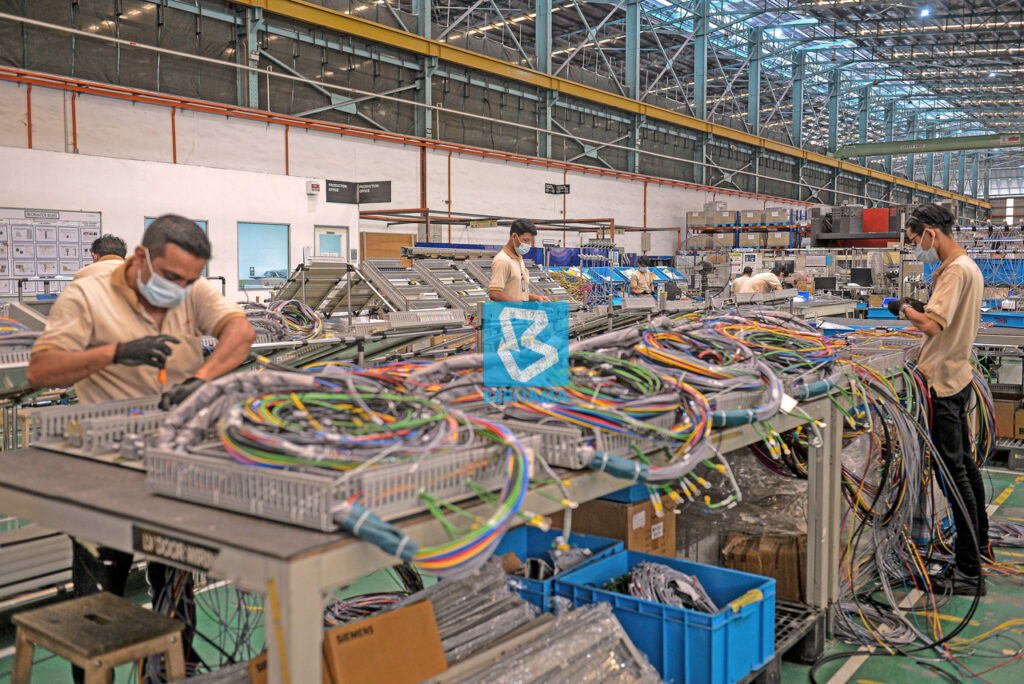Analysts observed that Malaysia’s August IPI will surprise on the upside, driven by the improvement in broad economic activities during the month. — Bernama photo
KUCHING: The industrial production index (IPI) is expected to surprise on the upside, with some analysts maintaining their projection for IPI to increase by nine per cent this year.
RHB Investment Bank Bhd (RHB Investment Bank) recapped that July IPI printed -5.9 per cent year on year (y-o-y) versus the Bloomberg consensus estimate of -0.7 per cent and June’s print of 1.4 per cent.
“In our view, August IPI will surprise on the upside with the improvement in broad economic activity to happen during the month,” the research firm said.
To note, RHB Investment Bank’s high frequency data indicated a sharp improvement upwards in the month as the lockdown restriction were eased.
“Weakness in July IPI data was expected as the imposition of the Enhanced Movement Control Order (EMCO) in parts of Selangor and Kuala Lumpur between July 3 to 16 caused closures and disruption to the domestic production chain.
“However, these were offset by the gradual reopening in other states. For instance, Penang which houses a large number of electrical and electronics (E&E) factories, moved to Phase 2 on July 7.
“The momentum of IPI reflect these differences with the momentum in E&E remained positive.
“Meanwhile transport equipment was weak following minimal operations in the factories as it was deemed non-essential.
“Despite this, August IPI should improve on a per cent month on month (m-o-m) basis as reopening measures gain traction during the month.”
RHB Investment Bank gathered that apart from Penang, several states also moved to Phase 2 in July and further up the phase in August.
“Even within Phase 1 itself, further ease was seen during the month. In mid-August, 11 more sectors were allowed to operate in Phase 1 of National Recovery Plan, and 11 more sectors allowed to operate in Phase 2.
“The government also allowed all non-essential activities in the manufacturing, construction, mining and quarrying sectors to resume operations.
“Meanwhile, operating capacity for most factories were increased to 80 per cent from 60 per cent previously.
“On September 10, Selangor and Kuala Lumpur (KL) moved towards Phase 2 of the National Recovery Plan (NRP). Meanwhile travel within Selangor, KL and Putrajaya were allowed.
“This should further support demand recovery.”
Some concerns however do remain on the feedback loop to Malaysia’s economy from recent weakness in US and China data, which RHB Investment Bank believed is temporary.
According to the research firm, China recorded a weak August Purchasing Managers Index (PMI) amid Covid-19 outbreaks which saw the Caixin index point towards a contraction in manufacturing activity.
“This could have some impact to Malaysian external-oriented IPI although China stronger-than-expected August trade data somewhat allay this concern.
“Similarly, in the US, slower August jobs growth may be a telling sign that the economic rebound is losing steam.”
Meanwhile, despite the weak July 2021 numbers, the research arm of MIDF Amanah Investment Bank Bhd (MIDF Research) maintained its projection for IPI to increase by nine per cent this year.
MIDF Research’s projection already imputed the weakness in the middle of the year following the imposition of full nationwide lockdown.
“We expect business and production activities will pick up following the gradual relaxation of restrictions from the middle of July 2021 and even in the latter part of the third quarter of 2021 (3Q21),” the research arm said.
“In particular, the government recently decided to allow Selangor, Putrajaya and Kuala Lumpur to move to Phase 2 of the National Recovery Plan effective from today, September 10, 2021.
“The recovery in domestic spending and increased mobility will support domestic-oriented production activities, while the sustained growth in the external demand will support exports and export-oriented output in the coming months.
“As more workers have been vaccinated, the reopening of the economy will allow companies to increase their production with higher capacity utilisation.
“The main concern would be should resurgence of Covid-19 infections and tighter restrictions in other parts of the world would affect Malaysia’s trade outlook.”

